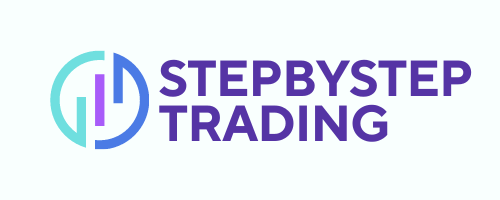7 Exhilarating Steps to Enter Financial Markets (Even on a Small Budget)
Enter financial markets? This is a question many people ask themselves, often in hushed tones, as they watch others build wealth. It’s easy to feel like you’re on the outside looking in. You see headlines about stock market gains, hear friends talking about their latest investment, and a part of you feels that familiar tug of curiosity. You’ve wondered, maybe even just for a moment, “Could I do that?” Yet, just as quickly, the doubts rush in. Do I need a fortune to start? Isn’t it all too complicated? What if I lose everything? These are not just common questions; they are the very barriers that stop so many talented, driven people from taking their first step. And let me tell you, you are not alone in feeling this way.
The world of finance can feel like a closed-off club, reserved for those with a deep understanding of economics or a massive bank account. The idea of learning how to enter financial markets seems daunting. You might have tried to search online, only to be hit with jargon-filled articles and complex charts that feel more like hieroglyphics than investment advice. It’s a frustrating experience that often leads to inaction, and that’s precisely what we want to change. We believe that everyone, regardless of their starting budget or background, deserves the opportunity to build a more secure financial future. This isn’t about getting rich quick; it’s about building lasting wealth, brick by brick.
What if I told you that you don’t need a huge inheritance or a finance degree to enter financial markets? What if the path to financial empowerment was simpler, more accessible, and yes, even exhilarating? The secret isn’t a magic formula. It’s about having a clear, step-by-step roadmap and the right guidance to help you navigate this new world. Imagine having a friendly expert right by your side, showing you exactly what to do and what to avoid, demystifying the entire process from the ground up. This article is that roadmap. It’s designed to answer your biggest questions and quiet your loudest fears.
This article will pull back the curtain and show you how to enter financial markets in a way that feels smart, safe, and exciting. We’re going to break down the process into seven exhilarating, actionable steps that anyone can follow. We’ll cover everything from how to choose the right account to how to find your first investment, all while focusing on strategies that work even on a small budget. Forget the noise and the confusing advice; we’re going to give you a clear path forward. Our goal is for you to finish this article feeling not just informed, but genuinely confident and ready to begin your journey.
But we want to give you more than just an article. We know that true learning comes from practical application, and we believe in setting you up for success from day one. That’s why, at the end of this guide, we’re offering something truly special. We’ve created an exclusive, completely free mini-course designed to accelerate your journey. This course will take the key concepts from this article and expand on them with practical exercises and deeper insights, giving you the foundational knowledge you need to thrive. Think of it as your first investment in yourself—one that costs you absolutely nothing. So, are you ready to stop watching from the sidelines and finally enter financial markets? Let’s get started.

The 3 Real Challenges of Learning to Enter Financial Market (and Why They’re Not Deal-Breakers)
The desire to enter financial markets can feel like standing at the base of a towering mountain. The path seems steep, the language is foreign, and the stories of those who’ve stumbled can be paralyzing. It’s easy to look at seasoned investors and assume they possess some innate talent you lack.
Let me assure you, they don’t. Every expert was once a beginner. The difference between intimidation and confidence isn’t a secret gene; it’s simply a matter of breaking down the journey into manageable steps. The biggest hurdles aren’t what you think. They are not about having a genius-level IQ or a trust fund. The real challenges are mental and educational. And the best part? Each one is a skill you can learn.
Let’s demystify the three most common challenges that stop beginners from taking their first step. We’ll explore what they truly are, reframe them as solvable puzzles, and equip you with the tools to overcome them. By the end of this section, your fear will be replaced with a clear, actionable plan.
Challenge #1: The Paralysis of Information Overload
The first barrier every new investor faces is the sheer volume of data. The moment you decide to enter financial markets, you’re bombarded with an endless stream of ticker symbols, financial news, economic indicators, complex charts, and conflicting opinions from so-called experts. It feels like trying to drink from a firehose. This overload triggers analysis paralysis, where the fear of making the “wrong” choice leads to making no choice at all.
This feeling is completely normal. The financial world is vast, and no one expects you to understand all of it at once. The key is to recognize that you don’t need to know everything to start. You just need to know enough to make one informed, small decision. Think of it like learning a language. You don’t start by reading Shakespeare; you start with “hello,” “please,” and “thank you.” The goal isn’t fluency on day one—it’s about learning your first few words.
Why It’s Not a Deal-Breaker: Information overload is a filter problem, not a capability problem. You don’t need to consume all the information; you just need to find the right, beginner-friendly information. The skill you develop here is curation. You will learn to identify reliable sources and ignore the noisy, sensationalist ones. This skill of focused learning is invaluable and will serve you far beyond your investing journey.
A Learner’s Anecdote:
Take Maria, a graphic designer who wanted to start investing. She followed financial news on Twitter, subscribed to three different stock tip newsletters, and tried to understand complex options trading strategies—all in her first week. She became so overwhelmed that she didn’t invest a single dollar for six months. Her breakthrough came when she decided to ignore everything else and focus on learning about just one thing: low-cost index funds. By narrowing her focus to a single, simple concept, the paralysis vanished, and she was able to make her first confident investment.
Recommended Tools:
- App: Investopedia (iOS/Android). This is much more than a website. Its app has a superb “Learn” section that breaks down complex terms into simple, digestible lessons. When you encounter a term you don’t know, you can look it up instantly and add it to your personal “learn list.”
- Website/YouTube: The Plain Bagel on YouTube. This channel is exceptional for cutting through the noise. Richard Coffin explains market concepts with clear visuals and a calm, rational demeanor, always distinguishing between fact and opinion. It’s a perfect starting point for visual learners.
Challenge #2: The Myth That You Need a Lot of Money
This is perhaps the most persistent and damaging myth that prevents people from taking the first step to enter financial markets. The image of Wall Street tycoons and high-stakes trading leads many to believe that investing is a game exclusively for the wealthy. This creates a mental block: “I’ll start when I have $5,000/$10,000/$50,000 saved up.” That day often never comes, and years of potential growth are lost.
This mindset confuses investing with speculating. Traditional, high-risk stock picking often did require large capital. But the financial markets have undergone a revolution in the last decade, overwhelmingly in favor of the small, individual investor. The barriers to entry have been demolished by technology and innovation. You are no longer required to buy whole, expensive shares of companies like Amazon.
Why It’s Not a Deal-Breaker: The “lot of money” myth is outdated. It is now entirely possible, and indeed common, to enter financial markets with a very small amount of capital. The development of fractional shares allows you to own a piece of a company for as little as $1 or $5. The skill you develop here is consistency, not capital accumulation. A small, regular contribution to your investments—a process called dollar-cost averaging—is often a more powerful strategy than waiting to invest a large lump sum.
A Learner’s Anecdote:
Ahmed was a recent graduate with student loans. He believed investing was for later in life when he was “rich.” He thought his $50-a-week disposable income was meaningless in the grand scheme of the market. Then he learned about fractional shares and micro-investing apps. He started automatically investing $20 every Friday into a fractional share of a broad-market ETF. Within a year, he had built a diversified portfolio worth over $1,000 without ever feeling a financial strain. He learned that the habit of investing was far more important than the initial amount.
Recommended Tools:
- App: M1 Finance or Charles Schwab. These platforms (among others) offer robust fractional share investing, allowing you to build a diversified portfolio with any amount of money. You can buy pieces of hundreds of companies and funds, making your $50 as powerful as a larger sum in terms of diversification.
- Website/YouTube: Investing with Rose on YouTube. Rose is a certified financial educator who specializes in explaining how to start investing with small amounts of money. Her content is practical, relatable, and focuses on building wealth sustainably on an average income.
Challenge #3: The Fear of Loss and Making Mistakes
This is the deepest and most emotional challenge. The fear of losing hard-earned money is a powerful and rational deterrent. Financial media often amplifies stories of dramatic crashes and bankruptcies, creating a perception that to enter financial markets is to gamble. This fear can be so potent that it prevents any action, locking people into the guaranteed loss of inflation eroding their cash savings.
It’s crucial to reframe what “loss” means. There is a world of difference between volatility (short-term price fluctuations) and permanent capital loss (losing all your money because a company goes bankrupt). For a long-term investor, volatility is simply the price of admission for higher returns; it is not a loss until you sell in a panic. The goal is not to avoid every dip but to build a portfolio resilient enough to withstand them.
Why It’s Not a Deal-Breaker: Fear of loss is a risk management problem, not an inevitability. The skill you develop is not prediction, but preparation. You learn to mitigate risk through two powerful tools: diversification (not putting all your eggs in one basket) and time horizon (investing money you won’t need for 5+ years). By constructing a diversified portfolio aligned with your goals, you mathematically minimize the chance of a catastrophic, permanent loss. Mistakes will happen, but they become valuable, inexpensive lessons rather than catastrophes.
A Learner’s Anecdote:
Sarah used her first $1,000 to buy shares of a single, popular tech company she heard about online. When the company had a bad quarter and the stock dropped 20%, she panicked and sold, locking in a $200 loss. She felt defeated. Instead of quitting, she treated it as a tuition fee. She learned about diversification. Her next step was to use the remaining $800 to buy a low-cost ETF that held small pieces of hundreds of companies. She slept better at night, knowing that one company’s bad news wouldn’t significantly hurt her entire portfolio.
Recommended Tools:
- App: Yahoo Finance. This free app allows you to create a “Watchlist” and a mock “Portfolio.” You can practice building a diversified portfolio with fake money and track its performance over time without risking a single cent. This is the best way to build confidence and understand volatility before using real capital.
- Website/YouTube: Aswath Damodaran’s YouTube Channel (NYU Stern School of Business). Known as the “Dean of Valuation,” Professor Damodaran is a master at teaching the fundamentals of risk and value. While some content is advanced, his foundational lectures on risk are unparalleled. Listening to him teaches you to respect risk rather than simply fear it.

3 Surprising Reasons why to enter financial markets is Easier Than You Think
Entering financial markets might feel intimidating at first, but surprisingly, it is much easier to grasp than many expect. For beginners looking to build confidence, understanding the unexpected reasons why entering financial markets is accessible can be truly empowering. Below are three surprising reasons why to enter financial markets is easier than other fields or “languages” one might try to learn.
Surprise #1: Widely Accessible Information and Tools
One of the biggest surprises about how easy it is to enter financial markets today is the democratization of information. Unlike many specialized languages or skills that require exclusive access or complex training, financial markets now offer a wealth of resources that everyone can tap into.
| Aspect | Traditional Learning | Entering Financial Markets |
|---|---|---|
| Access to Resources | Often limited and costly | Abundant free/affordable online tools |
| Complexity | High learning curve due to opaque jargon | Clear frameworks and educational content |
| Real-Time Practice | Rare and difficult to get | Simulated trading platforms readily available |
| Community Support | Limited mentoring | Active communities for beginners and experts alike |
Thanks to the rise of online platforms, apps, and financial news sources, beginners can immerse themselves quickly in the world of enter financial markets. These tools reduce the barriers by providing real-time data, simulations, and practical learning that make entry much easier than mastering other complex “languages.” This accessibility empowers newcomers to gain confidence faster and start engaging directly with the markets.
Surprise #2: The Universality and Simplicity of Core Concepts
Another surprising reason why to enter financial markets is easier than other languages lies in the universal and logical nature of its foundational concepts. Unlike learning languages that involve memorizing vocabulary and grammar rules, financial market basics rest on straightforward ideas such as supply and demand, risk and reward, and market cycles.
Understanding that markets are about buying low and selling high, evaluating risk, or diversifying portfolios provides an intuitive entry point. This universality cuts across cultures, industries, and geographies, making it easier for beginners to grasp without needing specialized prior knowledge. Moreover, financial markets tend to use consistent principles and terminology which, once learned, apply globally, further simplifying the learning curve for new entrants.
Surprise #3: Technology and Community Make It Beginner-Friendly
The final surprising reason why to enter financial markets is easier than other languages involves how technology and supportive communities lower traditional barriers.
- Technology equips beginners with automated tools, AI-driven insights, and user-friendly trading platforms that guide decision-making.
- Social trading networks allow learners to observe and mimic experienced traders, accelerating learning.
- Educational resources ranging from videos, podcasts, blogs, to interactive courses provide comprehensive guidance.
- Regulatory reforms have increased transparency and reduced entry costs for retail investors.
- The growing global interest in personal investing fosters a welcoming environment for beginners.
Together, these factors create an environment where entering financial markets no longer requires prohibitive expertise or insider knowledge. With modern support systems, newcomers can steadily build skills without feeling isolated. This combination of technology, community, and clarity of information speeds up success and makes the journey empowering.

Beyond the Rules: Three Inspiring Journeys to enter financial markets
The decision to enter financial markets isn’t just about understanding charts, analyzing trends, or calculating risks. Behind every successful trader lies a deeply personal story of transformation, resilience, and the courage to step beyond comfort zones. These three journeys reveal the human side of financial success, showing how ordinary people discovered extraordinary strength when they decided to enter financial markets despite overwhelming odds.
Each story represents a different path, yet they share common threads: the initial fear of the unknown, the moment of breakthrough that changed everything, and the profound transformation that followed. These aren’t tales of overnight success or magical formulas. Instead, they’re honest accounts of real people who found their way through struggle, learned from failure, and ultimately discovered that the greatest barrier to enter financial markets wasn’t lack of knowledge—it was believing in their own potential.
The Single Mother’s Dawn: From Survival to Financial Freedom
Sarah Martinez stared at her laptop screen at 3 AM, her infant daughter finally asleep in the next room. The medical bills from her difficult pregnancy had drained their savings, and her ex-husband’s support payments were sporadic at best. Working double shifts as a nurse barely covered rent and groceries. The idea to enter financial markets had been lurking in her mind for months, but it felt impossible for someone like her.
“I thought financial trading was for wealthy people with business degrees,” Sarah recalls. “I was a single mom working paycheck to paycheck. How could someone like me enter financial markets when I barely had enough to pay bills?” The fear was paralyzing. Every dollar mattered when you’re choosing between diapers and dinner. The thought of losing even fifty dollars to a bad trade felt catastrophic.
Her turning point came during a particularly brutal night shift. A patient, an elderly gentleman recovering from surgery, noticed her exhaustion. During their conversation, he mentioned his own journey to enter financial markets decades earlier. “I started with twenty-five dollars and a library book,” he told her. “The markets don’t care about your background. They only care about your discipline and willingness to learn.”
That conversation sparked something deep within Sarah. She began researching during her lunch breaks, watching educational videos on her phone while her daughter napped. The more she learned, the more she realized that the decision to enter financial markets didn’t require vast wealth—it required commitment and strategy.
Her breakthrough moment arrived six months later. After paper trading for weeks, she made her first real investment with just fifty dollars in a practice account. The trade was small, conservative, based on everything she’d learned about risk management. When she saw her first profit—a modest three dollars—tears streamed down her face. It wasn’t about the money. It was about possibility.
Sarah’s approach to enter financial markets was methodical and cautious. She reinvested profits, never risking more than she could afford to lose. Gradually, her evening study sessions transformed from desperate research into confident analysis. She learned to read market signals, understand economic indicators, and most importantly, manage her emotions during volatile periods.
The transformation was gradual but profound. Within two years, her trading income supplemented her nursing salary significantly. She could afford better childcare, moved to a safer neighborhood, and started a college fund for her daughter. More importantly, she discovered a strength and capability she never knew existed. The woman who once felt helpless watching bills pile up had become someone who could navigate complex financial instruments with confidence and skill.
Today, Sarah teaches other single parents how to enter financial markets responsibly. Her story proves that financial success isn’t reserved for the privileged—it’s available to anyone willing to educate themselves, practice discipline, and persist through initial challenges.

The Immigrant’s Dream: Building Bridges Across Cultures
Ahmed Hassan arrived in New York with two suitcases, basic English, and dreams that felt impossibly large. His engineering degree from Damascus meant little in his new country, and language barriers made professional employment challenging. He worked nights stocking shelves, days driving rideshare, sleeping four hours between shifts. The American dream felt distant, but his determination to enter financial markets grew stronger with each passing month.
“In Syria, I understood business, but American markets seemed like a foreign language,” Ahmed explains. “I knew I needed to enter financial markets to build real wealth, but everything felt overwhelming. The terminology, the regulations, the cultural differences—it was intimidating.” His first attempts at research left him confused and discouraged. Financial news seemed written in code, and investment platforms felt designed for native speakers.
The breakthrough came through an unexpected source: his rideshare passengers. One regular customer, a portfolio manager, noticed Ahmed’s curiosity about financial discussions on the radio. Instead of small talk, their rides became informal education sessions. The manager explained concepts in simple terms, recommended beginner-friendly resources, and emphasized that successful people who enter financial markets come from all backgrounds and cultures.
This mentorship changed Ahmed’s perspective entirely. He realized that his analytical engineering background was actually an advantage. The same systematic thinking that helped him design structures could help him analyze market patterns. His multicultural perspective allowed him to spot global trends that others might miss.
Ahmed’s journey to enter financial markets began with currency trading, leveraging his understanding of international economics from living through Syria’s financial challenges. He started small, using lunch money from his driving job to make conservative trades. His engineering mindset demanded he understand every variable before making decisions.
The first significant win came when he predicted currency fluctuations based on news from his home region—information he accessed through Arabic-language sources that most American traders couldn’t read. This unique advantage helped him enter financial markets with a perspective few possessed. His cultural background, initially seen as a barrier, became a powerful asset.
Within three years, Ahmed’s trading income allowed him to quit his driving job and focus entirely on financial markets. He leveraged his engineering credentials alongside his trading success to secure a position with an investment firm specializing in international markets. His journey to enter financial markets had not only provided financial freedom but also opened doors to career opportunities he never imagined.
The transformation was complete when Ahmed launched his own consulting firm, helping other immigrants understand how to enter financial markets safely and profitably. His story demonstrates that diversity of thought and experience can be tremendous advantages in financial trading, turning perceived weaknesses into unique strengths.

The Retiree’s Renaissance: Discovering Purpose Beyond Paychecks
At sixty-five, Margaret Thompson faced a reality many retirees confront: her pension wasn’t enough. Inflation had eroded her savings, and medical expenses continued rising. The idea to enter financial markets terrified her—she’d always left investment decisions to her late husband. Now, facing financial uncertainty in her golden years, she felt lost and overwhelmed by the complexity of modern financial systems.
“I thought my learning days were over,” Margaret admits. “How do you enter financial markets when you can barely operate a smartphone? I felt like the world had moved beyond my understanding.” Her children urged her to downsize, move to a smaller apartment, accept a diminished lifestyle. But something inside Margaret rebelled against that narrative.
Her transformation began at a community center financial literacy workshop. The instructor, himself a retiree who had successfully learned to enter financial markets, spoke directly to her fears and concerns. He emphasized that age could be an advantage—retirees often have patience that younger traders lack, and life experience provides emotional stability during market volatility.
Margaret’s breakthrough moment came when she realized she’d been managing family finances for decades without recognizing her skills. Balancing household budgets, timing major purchases, understanding insurance policies—these were all forms of financial management. The decision to enter financial markets wasn’t learning entirely new skills; it was expanding existing ones.
She started with conservative dividend-paying stocks, companies she understood from daily life. Her first investment was in a utility company whose services she’d used for thirty years. When quarterly dividends arrived, she felt a sense of accomplishment she hadn’t experienced since retiring. This wasn’t gambling—it was thoughtful capital allocation based on real-world knowledge.
Margaret’s methodical approach to enter financial markets reflected her life experience. She researched companies thoroughly, preferring businesses with long track records and stable earnings. Her age became an asset as she focused on long-term value rather than quick profits. Younger traders might chase volatile stocks, but Margaret built a portfolio designed for steady, sustainable growth.
The transformation extended beyond financial returns. Learning to enter financial markets gave Margaret a sense of purpose and intellectual stimulation she’d missed since retirement. She joined investment clubs, attended webinars, and discovered a community of like-minded individuals who proved learning never stops. Her confidence grew with each successful investment decision.
Within four years, Margaret’s investment income exceeded her pension. More importantly, she’d developed expertise that allowed her to help other seniors navigate similar challenges. She now volunteers at the same community center where her journey began, teaching other retirees that it’s never too late to enter financial markets and take control of their financial futures.
Her story proves that successful investing isn’t about age—it’s about wisdom, patience, and the courage to begin. Margaret’s renaissance demonstrates that retirement can be a beginning rather than an ending, especially for those bold enough to enter financial markets with thoughtful preparation and realistic expectations.
These three journeys reveal profound truths about what it means to enter financial markets. Success isn’t determined by starting capital, educational background, or age. It’s determined by willingness to learn, discipline to manage risk, and courage to persist through initial challenges. Each story shows that the greatest obstacle to enter financial markets isn’t external—it’s the limiting beliefs we carry about our own capabilities.
Whether you’re a struggling single parent, an ambitious immigrant, or a retiree seeking security, the opportunity to enter financial markets awaits. The question isn’t whether you’re qualified—it’s whether you’re ready to begin your own transformative journey.

Enter Financial Markets – 7 Exhilarating Steps (Even on a Small Budget)
You’ve moved past the fears and are ready for action. This feeling—this eager anticipation—is exactly what exhilaration feels like. You are not just reading about how to enter financial markets; you are about to build your personal roadmap. This is where theory transforms into power.
As your coach, my job is to give you a clear, actionable plan that respects your time and your budget. The following seven steps are divided into three logical phases: Foundation, Execution, and Growth. You don’t need a fortune to start this journey. You just need consistency and the right strategy. Let’s turn your ambition into a reality. It’s time to enter financial markets with confidence and clarity.
Phase 1: The Unshakable Foundation (Steps 1-3)
This phase is about preparation. It’s the work you do before investing a single dollar. Getting this right is what separates a thoughtful investor from a gambler. A solid foundation is the best possible start for anyone looking to enter financial markets successfully.
Step 1: Define Your “Why” and Your Timeline.
- Why: Your goal is your anchor. It will keep you from panicking during market dips and keep you focused on your long-term strategy. Investing without a goal is like sailing without a destination.
- How: Be specific. Is your “why” a down payment for a house in 10 years? Retirement in 30? Or building a $10,000 “dream fund” in 5 years? Write it down. Your timeline determines how much risk you can comfortably take.
Step 2: Audit Your Financial Health.
- Why: You must build your investment house on solid ground. This step ensures you have a safety net so that an unexpected life event doesn’t force you to sell your investments at a loss. This crucial audit is a non-negotiable first step before you can truly enter financial markets with peace of mind.
- How: Do a quick review. Do you have high-interest debt (e.g., credit cards)? Focus on paying that down first. Do you have an emergency fund with 3-6 months of expenses? If not, build that before you seriously enter financial markets.
Step 3: Choose Your Investing Platform (Broker).
- Why: Your broker is your gateway to the markets. The right one makes the process easy, low-cost, and educational. The wrong one can be confusing and expensive. Selecting the right partner is a pivotal decision that will define your experience as you enter financial markets.
- How: For beginners, look for two key features: $0 commission fees on stock/ETF trades and fractional share investing. Top-rated options for beginners include Fidelity, Charles Schwab, and E*TRADE. Open an account—it takes about 15 minutes.
Phase 2: Your First Execution (Steps 4-5)
This is the exhilarating part where you stop planning and start doing. You are now ready to enter financial markets with your first investment.
Step 4: Start with a Single, Broad Market ETF.
- Why: This is the ultimate smart start for a beginner. An ETF (Exchange-Traded Fund) like VTI or IVV holds tiny pieces of hundreds of companies. You get instant diversification, which drastically reduces your risk. It’s the easiest way to own the entire market.
- How: In your new brokerage account, search for the ticker “VTI” (Vanguard Total Stock Market ETF). Use your fractional shares feature to invest a small, comfortable amount—even $50. Congratulations, you now own a piece of the entire U.S. stock market!
Step 5: Automate Your Contributions.
- Why: This is your superpower. Automating investments forces discipline, removes emotion, and allows you to benefit from “dollar-cost averaging.” This means you buy more shares when prices are low and fewer when they are high, smoothing out your average cost over time. This automated system is the most effective strategy to enter financial markets consistently, regardless of the news cycle.
- How: Inside your brokerage account, find the “automatic investment” or “recurring investments” feature. Set it up to transfer $50 (or any amount) from your bank account every two weeks and automatically purchase more of your chosen ETF.
Phase 3: Mastering the Growth (Steps 6-7)
With your foundation solid and your plan in motion, you can now expand your knowledge and strategy to accelerate your growth. This is where you move from a beginner to a confident investor.
Step 6: Diversify Your Knowledge and Portfolio.
- Why: Once your core investment is on autopilot, you can slowly start to learn about and add other assets. This deepens your understanding and can further strengthen your portfolio against volatility.
- How: As you save more, consider adding a second ETF for international exposure (e.g., VXUS). Allocate a tiny portion (no more than 5%) of your monthly contribution to learning about and investing in a single company you truly believe in and understand.
Step 7: Schedule Quarterly Check-Ins (Not Daily Checks!).
- Why: The market will fluctuate daily. Checking it constantly is a recipe for anxiety and impulsive decisions. Successful investors are gardeners, not day-traders; they plant, water, and occasionally check for weeds, but they don’t dig up the seeds every day to see if they’re growing. This disciplined approach is what allows you to sustainably enter financial markets for the long term, ignoring short-term noise.
- How: Put a recurring event in your calendar every three months. During this 15-minute check-in, log into your account. Ensure your automatic investments are running. Revisit your goals. Then, log out. That’s it. Trust the process you’ve built.
The Ultimate Accelerator: Your Free Mini-Course
You’ve just consumed a powerful blueprint. But knowledge without application is just information. If you’re ready to transform this plan into true confidence, I have something for you.
The steps above are the foundation. In our free mini-course, we go so much deeper. We break down each step with video tutorials, interactive worksheets to define your goals, and a supportive community to get your questions answered. You’ll learn exactly how to analyze an ETF, navigate your brokerage platform like a pro, and build a portfolio that truly fits your life.
This is your chance to enter financial markets not just with a plan, but with unwavering confidence. The course is free because we believe everyone deserves access to financial education.
Ready to stop reading and start doing? [Click here to enroll in your free mini-course and start your journey today!]


